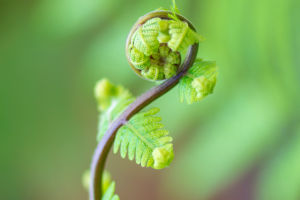Why Flowers Are So Bright
Hello, Lykkers! Have you ever wondered why flowers are often so brightly colored? From the vivid reds of roses to the sunny yellows of daisies, these vibrant hues aren't just for show.
They play crucial roles in the survival and reproduction of plants. Let's delve into the fascinating reasons behind these dazzling displays.
1. Attracting Pollinators
Why It's Important: Flowers rely on pollinators like bees, butterflies, and birds to transfer pollen from one flower to another, facilitating reproduction. Bright colors are a visual cue that attracts these pollinators.
How It Works: Different pollinators are drawn to different colors. Bees, for instance, are attracted to blue and violet flowers, while hummingbirds prefer red and orange blooms. By evolving to display the colors that their preferred pollinators can see best, flowers increase their chances of being visited and pollinated.
Example: Sunflowers with their bright yellow petals are highly attractive to bees. This mutualistic relationship benefits both the flower, which gets pollinated, and the bee, which collects nectar and pollen.
2. Signaling Nectar Availability
Why It's Important: Pollinators visit flowers in search of nectar, their primary food source. Brightly colored petals act as signals that guide pollinators to the nectar within.
How It Works: The color and pattern of flowers can indicate the presence of nectar. Some flowers even have ultraviolet patterns visible only to certain pollinators, like bees, helping them quickly locate the nectar.
Example: The common daisy has a bright yellow center surrounded by white petals, clearly signaling to pollinators where they need to go to find nectar.
3. Detering Herbivores
Why It's Important: Bright colors can also serve as a deterrent to herbivores, animals that might otherwise eat the flowers and reduce the plant's chances of reproduction.
How It Works: Some brightly colored flowers produce toxins or have a bitter taste. The vivid colors act as a warning signal to herbivores, indicating that the plant is not a suitable food source.
Example: Foxgloves have striking purple flowers, which contain toxins that can be harmful if ingested. The bright color warns herbivores to stay away, ensuring the flowers remain intact for pollination.
The Role of Human Perception
While the evolutionary reasons for brightly colored flowers are rooted in survival and reproduction, humans have also played a role in their development. Over centuries, we have cultivated flowers for their aesthetic appeal, selecting for the brightest and most vibrant blooms. This has further enhanced the diversity of flower colors we see today.
Conclusion
The brilliant colors of flowers are far more than just eye candy; they are essential tools for attracting pollinators, signaling nectar availability, and deterring herbivores. These evolutionary adaptations ensure that flowers can reproduce and thrive in their environments.
So, next time you admire a garden full of colorful blooms, remember the intricate reasons behind their beauty. Flowers are nature's way of communicating, surviving, and flourishing.
Understanding why flowers are so brightly colored not only deepens our appreciation of their beauty but also highlights the intricate connections within ecosystems. Keep enjoying the wonders of nature, Lykkers!
Why are the flowers brightly colored?
Video by Quick Queries


